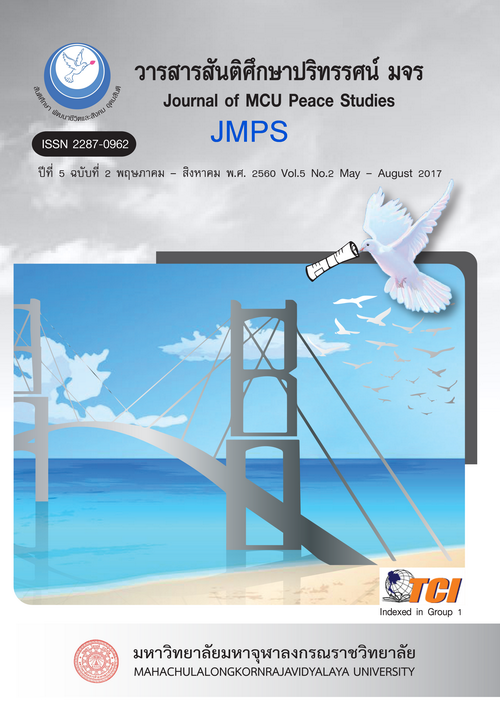A Philososphical Approach in Mahāparinibbāna Sutta
Main Article Content
บทคัดย่อ
This research aims at studying the essence and structure of Mahāparinibbāna Sutta, philosophical issues, and values of the Sutta towards the contemporary society. This is a documentary research mainly based on the Pali Tipitaka and its related sources.
The study revealed that this is the longest Sutta in Tipitaka with its contents divided into six portions. It is categorized in Mahāvagga of Dighanikāya in accordance with its long contents. There are a lot of repetitions of Pali sentences and teachings, especially Tisikkhā depicted throughout the Sutta. Many passages are extended in details, whereas may are shortened. Both extended and shortened passages are found in the same Nikāya, or the different Nikāya, or the different Pitaka.
For a philosophical approach, it is found that ethics showed the happiness in two levels: sensual pleasures and advanced happiness, i.e. Nibbāna. The path leading to it is Tisikkhā, i.e. Sila leading to the first level, and Samādhi and Pannā to the second. Ontology revealed the extraordinary beings: Māra and Devas who caused a lot of miracles. Deductive Logic showed how Sāriputta gained deep faith in the Buddha. Epistemology showed a criterion for accessing knowledge called the fourfold Mahāpadesa and the extra-sensory perception of the Buddha and Anuruddha. For an analysis of the values towards the society, the Sutta led to the ethical values as a good media leading to the performance of good deeds. The aesthetical values refer to feeling of impression and deep delight as one has performed a good deed according to the teaching depicted in the Sutta.
Article Details
ทัศนะและความคิดเห็นที่ปรากฏในบทความในวารสาร ถือเป็นความรับผิดชอบของผู้เขียนบทความนั้น และไม่ถือเป็นทัศนะและความรับผิดชอบของกองบรรณาธิการ ยินยอมว่าบทความเป็นลิขสิทธิ์ของวารสาร


